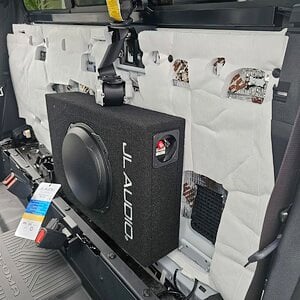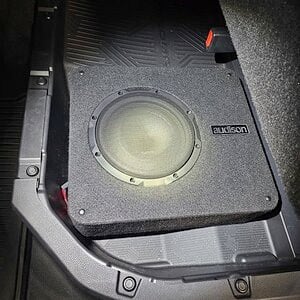Amplifier output power vs. electrical system input voltage
- Thread starter emilimo701
- Start date
- Replies 23
- Views 4K
-
- Tags
- amplifiers voltage
You are using an out of date browser. It may not display this or other websites correctly.
You should upgrade or use an alternative browser.
You should upgrade or use an alternative browser.
-
7Participant count
-
Participant list
CAT MAN 5,000+ posts
Banned
its just like sa Dc aa blah blah blah . all have their own stronghold and outragious price.i dont think DD is worth the money i know they make a killer product but danm
Imtjnotu 5,000+ posts
Me Gusta Edition
this is where i would disagree.
if i was doing a setup that needed the car off and i ran 14v batts. best believe DD is my ish. If i had a lil extra cash and wanted some good power for daily its my ish.
---------- Post added at 04:06 PM ---------- Previous post was at 04:05 PM ----------
yeah what do i know. im only fooling with DD on a daily basis.
supposedly fools with DD on a daily basis HAS AN MB QUART AMP

CAT MAN 5,000+ posts
Banned
i cant afford to run hem and i love my mb 4 channels //content.invisioncic.com/y282845/emoticons/thumbsup.gif.3287b36ca96645a13a43aff531f37f02.gif. but everyone in the franklin county cruisers run them and i help install/tune/seqs with them. you really have no clue what you're talking about now.supposedly fools with DD on a daily basis HAS AN MB QUART AMP

emilimo701 10+ year member
CarAudio.com Elite
- Thread Starter
- #20
This was exactly the type of answer I was looking for. Some of the stuff you said was familiar such as rail voltage, but for the most part it's all new to me.there are two different types of regulation in amp power supplies and one type in the amp itself-----in the power supply there is input regulation and output regulation-----and there is degree of regulaton----input regulation means that the supply is designed to operate over a certain range of supply voltage---for example 10 volts to 16 volts----this means that the amp should perform well no matter what the supply is----now the degree of regulation determines just how good the amp stays within spec throughout that range----some amps are very tightly regulated and some are not at all and loose power at the lower voltages---as far as input regulation i would opt for good regulation-------power supply output regulation refers to the ability of the amp to maintain its rail voltages at a fixed voltage as the amp is called on to change from no load to full load----this factor determines more than any other thing the dynamic ability of the amp----if the supply is tightly regulated the amp will have the same continuous power as peak transient power----if it is loosly regulated the amp will have the ability to produce undistorted musical peaks much higher than its continuous rating----- for this spec i would always choose the least regulation if the continuous power was the same between two amps-----the problem is most people don't know the difference between the two and seldom is it specified------there is a third kind of regulation-----this is output signal regulation and it indicates the ability of the amp to maintain a constant output regardless of load------this spec determines damping factor------as long as this spec is 30 or higher it is more than adequate.......
by the way---there are no totally unregulated amps in either of the three catagories if the amps have switching supplies (meaning over 50 watts per channel)--some amps are just more tightly regulated in some areas than others--- an unregulated amp would never work in a car at all
So what I'm understanding as the main takeaway is that although the output power might fluctuate slightly, it is the goal of most amp manufacturers to have the power supply input regulation to be as tight as possible. Right?
Since it seems like most cars' alternators, mine included, seem to hover around 13.8 volts, I feel that companies should measure their advertised specs at that voltage.
emilimo701 10+ year member
CarAudio.com Elite
- Thread Starter
- #21
Corollary to the takeaway: if you get x amount of wattage out of an amp at a particular voltage, say 13.8, you shouldn't really expect your music to be louder if you suddenly increase your voltage to 14.4 or higher.
Right?
Right?
TaylorFade 10+ year member
I fail.
thats what he said idiot....DD makes power on 12v and makes a crap ton more on 14v......do u even read or u just quote people saying garbage
I'll chime in here.dd is under rated anyway from 12.8. so you may see an extre 5-600 and think its from voltage. im around alot of DD from the franklin county cruisers. i have some experience //content.invisioncic.com/y282845/emoticons/wink.gif.608e3ea05f1a9f98611af0861652f8fb.gif
DD rating their amps at lower voltage is good for two reasons. First, it helps with competiton ratings //content.invisioncic.com/y282845/emoticons/smile.gif.1ebc41e1811405b213edfc4622c41e27.gif And more importantly, it gives you a much better idea what you'll actually see on a 12v system.
It is true that DD's (well, at least the M3a) don't like much over 15v, they certainly make more power at higher voltage. they don't open up like some *coughD5cough*, but obviously they benefit as evidenced by my testeing last weekend.
DD M3a
- 3,657w @ 11.2v
- 4,088w @ 13v
400+ watts isn't earth shattering, but that is only a 1.8v difference. If you can hold 14v, you're looking at a 1k difference. And in the world of SPL, that 400w was worth .8 on the TermLab.
CAT MAN 5,000+ posts
Banned
/dd TF im calling youI'll chime in here.
DD rating their amps at lower voltage is good for two reasons. First, it helps with competiton ratings //content.invisioncic.com/y282845/emoticons/smile.gif.1ebc41e1811405b213edfc4622c41e27.gif And more importantly, it gives you a much better idea what you'll actually see on a 12v system.
It is true that DD's (well, at least the M3a) don't like much over 15v, they certainly make more power at higher voltage. they don't open up like some *coughD5cough*, but obviously they benefit as evidenced by my testeing last weekend.
DD M3a
- 3,657w @ 11.2v
- 4,088w @ 13v
400+ watts isn't earth shattering, but that is only a 1.8v difference. If you can hold 14v, you're looking at a 1k difference. And in the world of SPL, that 400w was worth .8 on the TermLab.
With the huge amplifiers that are out now a days can draw huge amounts of current without batting an eye. So most reputable companies will rate at 12-12.4 or so volts because dropping below that 13.8v is extremely easy. The good thing about rating at 12v is that if you can stand to stay above that the amplifier will have higher output.
you can do some simple math to figure this out, however it's not 100% perfect because I am not account for efficiency
lets say you have a 1500w amplifier
Watts/volts = amperage
so
1500/12.4= 121 amps rounded up
so we take the same amount of amperage times a higher voltage, say 13.5v and we get
13.5v*121= 1633 watts
1633-1500= 133 more watts..
you see with the lower spec rated at 12v we get slightly more power.. and this can help a lot in the competition lanes. The gain can be much more but that's dependent on the amplifier.
and we can use some more math to find out how much of a change that would be...
L =10log (P/Pref)
P=new power
Pref= original power
L =10log (1633/1500)
10 log(1633 / 1500) = 0.368949257 dB change.. It's completely inaudible but could be the difference between a win and a lose.
The difference in bigger amplifiers you will see a manageable difference... but overall in a daily situation it doesn't mean much.
Oh and that's not account for power compression.. blah blah blah.
you can do some simple math to figure this out, however it's not 100% perfect because I am not account for efficiency
lets say you have a 1500w amplifier
Watts/volts = amperage
so
1500/12.4= 121 amps rounded up
so we take the same amount of amperage times a higher voltage, say 13.5v and we get
13.5v*121= 1633 watts
1633-1500= 133 more watts..
you see with the lower spec rated at 12v we get slightly more power.. and this can help a lot in the competition lanes. The gain can be much more but that's dependent on the amplifier.
and we can use some more math to find out how much of a change that would be...
L =10log (P/Pref)
P=new power
Pref= original power
L =10log (1633/1500)
10 log(1633 / 1500) = 0.368949257 dB change.. It's completely inaudible but could be the difference between a win and a lose.
The difference in bigger amplifiers you will see a manageable difference... but overall in a daily situation it doesn't mean much.
Oh and that's not account for power compression.. blah blah blah.
Activity
No one is currently typing a reply...
Similar threads
No. A Dual 1 ohm subwoofer will only wire to 0.5 or 2 ohms.
4 dual 4 ohm subwoofer will wire to 1 ohm or 4 ohms.
Again it's still a monoblock...
- Started by Vash01
- Amplifiers
- 13
- 1K
FOR SALE
MMATS Hi-Fi 6150D Amplifier
Dats a whole lot of power going on!
GLWS!
- Started by Jeremy1971
- Car Audio Classifieds
- 1
- 116
The CT's are nice, That Sundown is a a frik'n beast!
- Started by HennyGod
- Amplifiers
- 7
- 568
I would try a pair of Bass Blockers on the rear speakers. I always place them on Coax. speakers generally, Should help quite a bit I like PAC ones...
- Started by Aryan
- Amplifiers
- 3
- 606
Ok, i will go on this option. Thanks a lot bro for the help, i really appreciate again,
Cheers
- Started by PANSI Irwin
- Amplifiers
- 9
- 618


